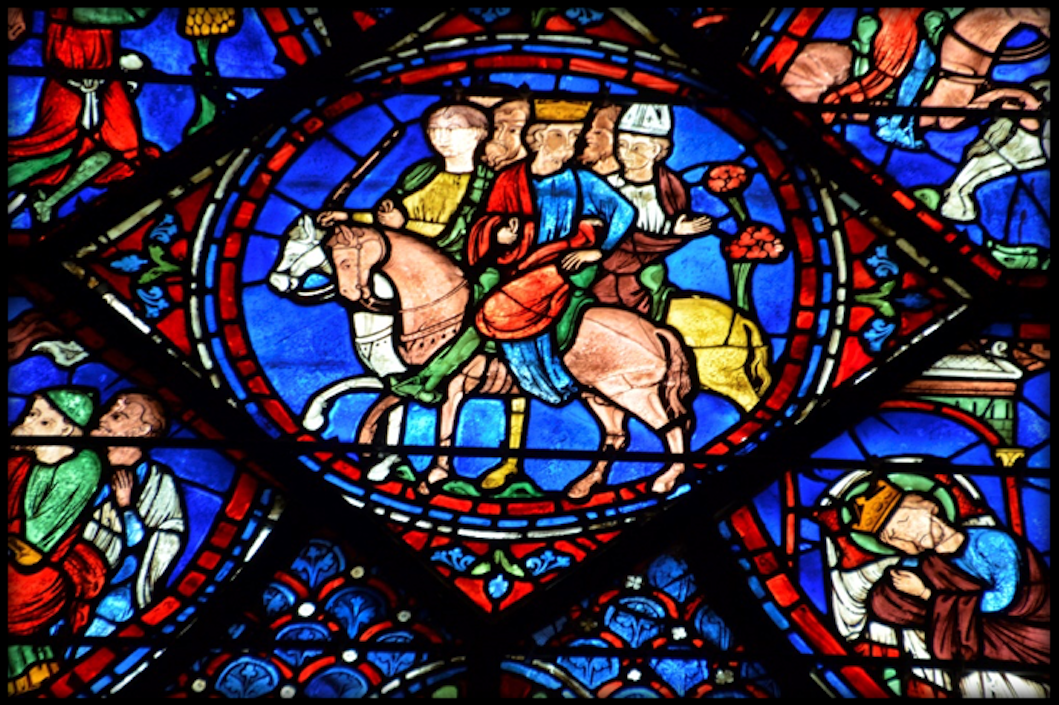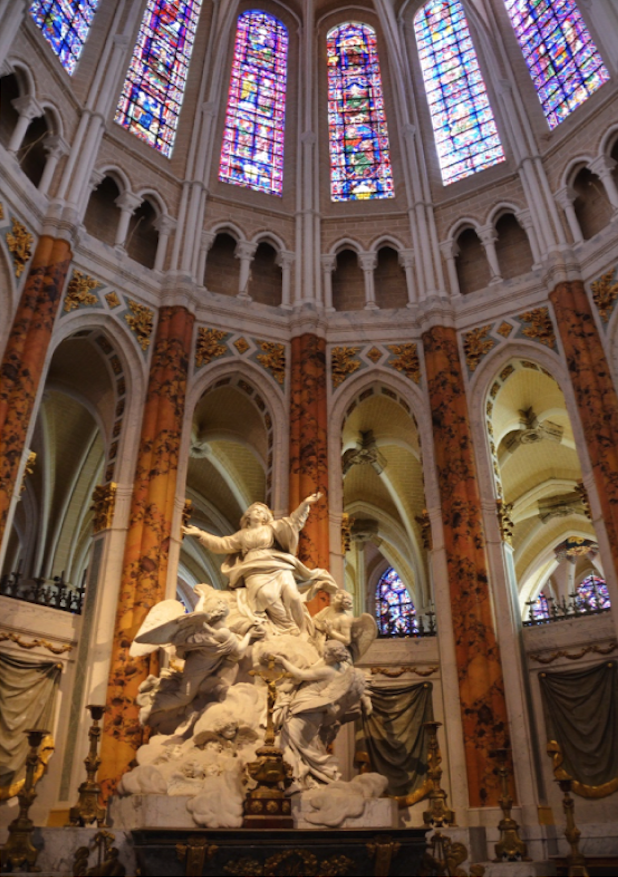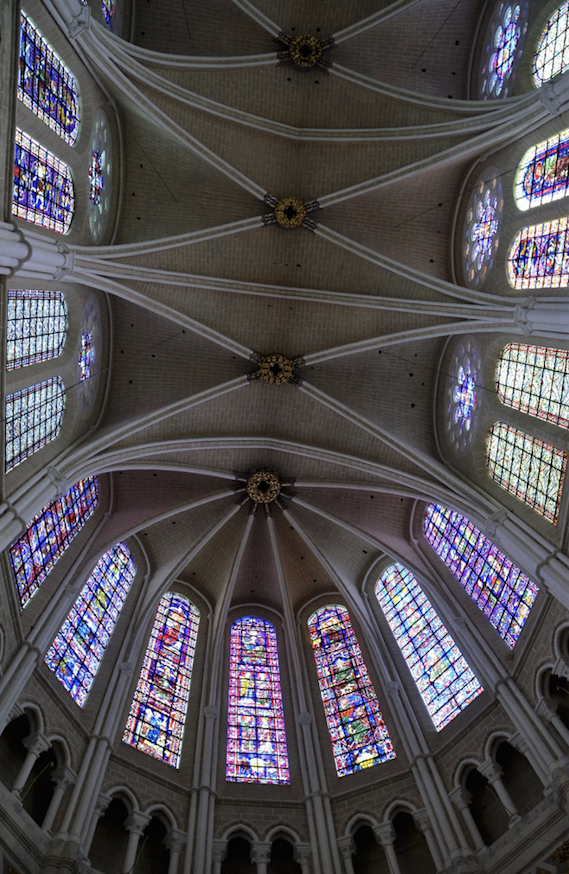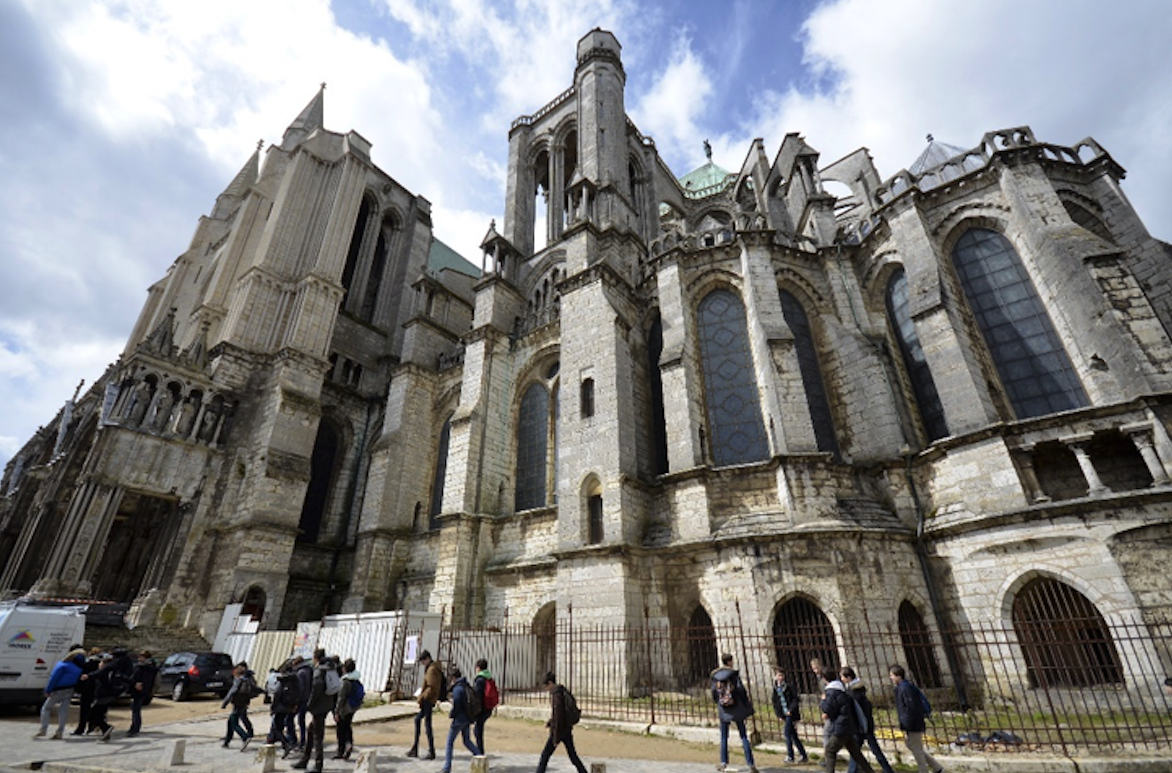
Ian Smith delves deep into the history and architecture of one of France’s finest cathedrals.
We were heading for Chartres because we’d heard it’s the jewel in the crown of Gothic architecture. We’d left Charles du Gaulle airport in record time, heading south in a rented Opel that smelt like a 50’s pub in Oz. It absolutely reeked of cigarettes and, had it been easy to turn around and go back, we would have returned it.
As it was, we drifted around Paris for 45 minutes before being released by “Miss Direction” (as I call my GPS) into the countryside. The verdant fields of the north flowed by until we reached our first destination, parking beside a culvert beneath the hill on which the standout edifice was positioned nearly a thousand years ago.
We crossed over the Rue des Tanneries (Tannery Street) where traces of the old industry and Normandy style half-timbered houses can still be seen. Then we crossed the stream they had used and headed upwards, through ancient stone walls and ramparts up to this wondrous spectacle, a story on its own. Just before we reached it there, on a small door like a cellar entrance, was a graffiti portrait of a woman’s face with a shawl. It had a haunting power about it, the eyes were so penetrating and there was an incongruity with this thing of beauty set upon an old rustic entry. It haunts me still.
Though only a few parts of the original Romanesque building remain after a disastrous fire in 1194, the classic arches and sculptures (some with heads missing on the lintel) over the entryways will capture your interest, as will the more recent elongated Gothic colonnades. There are stories represented in all the three main portals, but some of their meanings are still disputed.
Then you step inside and when you see the 176 stained-glass windows that cover 2,600 square metres, your attention is immediately and irrevocably locked into the wonders of this place. Perhaps just as fascinating is the fact that all the windows were removed during WWII and put into safe storage. I can’t get my head around how they could get all of them down from the great height that many of them are set in. I also learned about the American Texan army leader, Colonel Welborn Griffith, who questioned the need to destroy the cathedral when it was believed that the Germans occupied the site. Along with another trooper, they bravely reconnoitred the area and discovered no German presence, then signalled back to other forces, thus it was never attacked. It’s almost as amazing as the original building. Welborn was killed in another heroic action a couple of months later and posthumously received many awards.

On looking at the glass, you have to bear in mind that 800 years ago so few people could read written text, so the windows had an importance beyond their beautiful colours. They invariably told stories in pictures about the bible and daily life. The quantity and quality are mesmerising and you can’t help but constantly rubberneck at those up high. You also have to read them (if you can work it out) from bottom to top, unlike British windows that read from top to bottom.
Another standout highlight is the 16th
century screen that entirely surrounds the choir – it’s probably the best-quality work in the whole cathedral. The choir is surrounded by the wall, which is intended to better isolate it from the ambulatory. Entirely sculpted (40 groups, 200 statues in total), it is partly the work of Jehan de Beauce who started the construction at the beginning of the 16th century.

The high-altar (1771) is also brilliant and is the work of the sculptor Bridan and portrays the Assumption of the Virgin Mary based on Victor Louis’ drawing, in a baroque style, which was very much in vogue at the time.
The cathedral was suffering the dreaded European scaffold disease inside while we visited, but its magnificence was undiminished. In the middle of one of the floors is a labyrinth and such is its fame that while we were there people were continually walking around it to perhaps unravel its mysteries. Though they predate the Christian era, they continued through the centuries and supposedly its principal purpose, both physical and spiritual, is to lead us intelligently to a contemplation of that which is within us. Personally, I contemplated why you had to walk around (on your knees if you were really serious) in a maze to do such a thing.

The height of the ceiling is another thing; it’s more than 120ft high. At 154ft, Beauvais is the tallest but it’s in such a chronic state it’s been propped up with unsightly brackets everywhere, whereas here you have an uninterrupted view to the overhead portions.
Read more: Your guide to deciding if you should get a Europe rail pass
The entrances were also special and full of meaning. Over one of the three doorways with a combined title of the Royal Portal, are the seven liberal arts sculpted and those who best exemplified them, like Euclid and geometry, Cicero and rhetoric, Aristotle and dialectic, Boethius and arithmetic, Ptolemy and astronomy, Pythagoras and music, Donatus and grammar. Also present are the zodiac signs and representations of their correlated monthly activities.

We left via this portal and dined beside the church looking back on it in a wonderful salon de the, not only for the repast but to escape the bitter wind that pushed around the corners and buffeted your clothing.
Thus refreshed we once again moved, first back down the bastions and then onwards to Blois, a town we practised saying for weeks before we went. It’s about the only one we’ve gotten right so far this trip!
It is a delightfully situated town, as so many of them are, beside the Loire resplendent in some of its former glory such as the royal chateau and a few memorable churches. For us that night, it was a place to spend our first night in France.